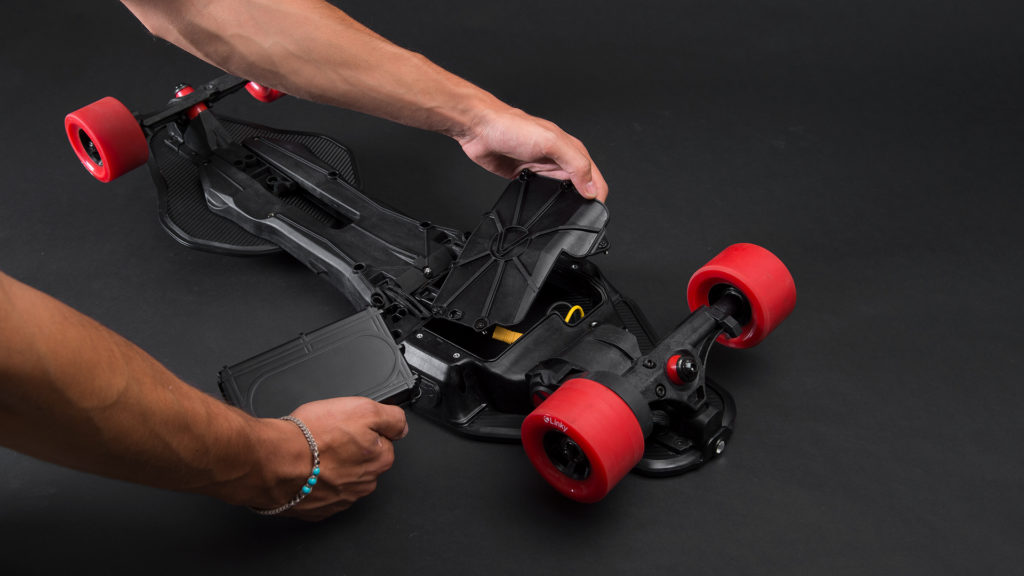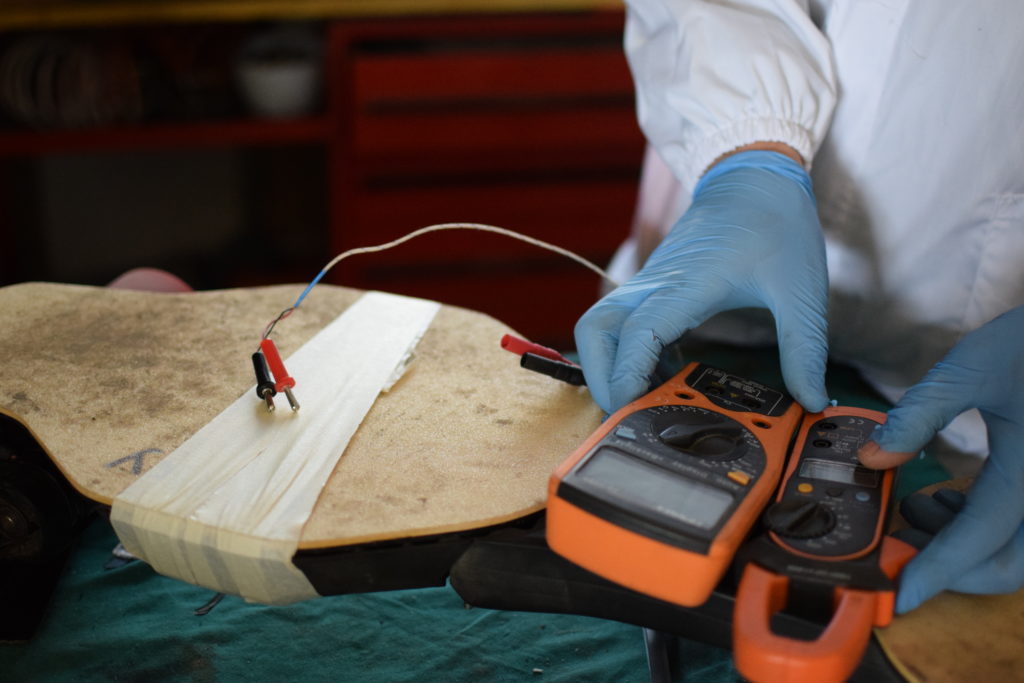Electric longboards are leading the charge of the personal electric mobility movement. They are efficient, reliable, affordable, and easy to use.
More and more commuters are opting to use an electric longboard as a means of getting work. They’ve caught on to the fact that personal mobility is just as feasible as using a car or public transport, if not even more so.
But there are some unique things to know about commuting to work with a longboard if you’re planning on doing so. For one thing, you will need to start considering where and when to charge as well as the terrain that you will be riding on.
There’s nothing intimidating about riding an electric longboard to work – it’s totally doable even for beginners. But once you’ve learned a trick or two, your commute will be much quicker.
Below is a list of tips and tricks for commuting to work with an electric longboard. Give them a try and soon you will find commuting not only easier but also more enjoyable. Going to work doesn’t need to be so bad!
1. Choose the right kind of longboard
Longboards are becoming increasingly specialized these days. Some are meant for downhill, others can be taken off-road, a few can even be folded and put in your backpack.
Commuting requires a very specific type of longboard. You’ll need something maneuverable, portable, and, above all else, reliable. Starting your morning routine and getting stuff halfway to work because your board broke would obviously be frustrating.
Since you’re already here, you obviously are interested in an electric longboard specifically. Electric longboards are good for commuting because they’re more practical than analog boards over longer distances as well as faster.
When choosing between electric commuting longboards, you’ll want something preferably with a removable battery. These are easier to charge.
You’ll also want a board that is a bit wider and less short. These are generally easier to ride though not quite so good at carving. Unless your commute includes crazy corners or downhill sections, you won’t need to carve too much.
Having a portable board would also be very convenient as you’ll be mounting/dismounting it regularly and might even need to take the bus or train. Linky electric boards are actually foldable which makes them the best in portability!
2. Take an additional battery and charger
The average electric longboard battery will last about 20 miles or so before it needs to be recharged. The average commute distance in the USA and UK is about 10-20 miles one way.
At some point in the workday, you’re going to have to either charge or switch batteries.
First and foremost, you should always have your charger with you if you plan on riding more than 10 miles in a day. That way, you plug in wherever you go.

It would also pay to have a spare battery with you. Who knows if the coffee shop you’re working in has a spare outlet or if you’ll even have enough time to charge. You never know either if and when your battery might not work due to a malfunction. In cases like these, a spare battery can really save your ass.
Worst case scenario is you have a dead battery and have to ride the longboard the good ol‘ fashioned way: by pushing. That’s not so bad.
3. Use the right kind of wheels
You’ll want to have larger, softer wheels for commuting on your electric longboard. The additional girth and cushion will help your board handle irregular surfaces better and make the overhaul ride much more comfortable.
Larger wheels have increased stability and will allow your longboard to travel faster. When they’re softer too, they can handle imperfections in the road as well as little pieces of debris.
Smaller, harder wheels – like the ones you find on skateboards – are much less able to handle cracks and pebbles on the road. If you’ve ever seen a skateboarder launched from their board suddenly for no explicable reason, it’s probably because they just hit a rock in the street.
If you’re going to be commuting with a longboard, you’re going to be riding A LOT. Not having to worry about getting tossed or eating shit will make the ride much more safe and enjoyable.
4. Understand the terrain
Longboards are less able to cope with varied terrain as an electric bike or car might be able to. Whilst they’re great on flat, level surfaces, they’ll struggle more with anything off-road or where hills are involved.
Streets are where commuter longboards thrive. They’re relatively smooth and usually flat, which are ideal conditions for your board. If you’ve invested in some big, soft wheels, your electric longboard will be even more capable.
Leave the road and things get complicated. Uneven and soft terrain – such as mud, dirt, and sand – will slow the electric board down and possibly cause it to get stuck. Roots, rocks, sticks, anything lying on the ground will also risk tossing you. Some all-terrain longboard wheels might help but not by leaps and bounds.

Hills in particular will be the bane of your board’s existence. You might be racing along at 25 mph on the road but the moment you hit that slope, the board’s going to slow to crawl as you lose momentum and the motor goes into overdrive to compensate. You’ll get over the hill eventually, but doing lots in a row will lengthen your commute time and drain the battery quicker.
If you know what kind of terrain you’re going to encounter, you’ll be prepared to deal with it. Avoid hills and stick to the asphalt as much as possible and your commute will be easier.
5. Combine with other modes of transport
There are times when you need to put the longboard away and use alternative means of commuting. Perhaps the rain is pouring so hard that you can’t ride anymore, or maybe you’ve got a dead battery, or maybe there’s a terrible hill that you just don’t want to deal with ever.
One of the greatest advantages of using an electric longboard to commute is that you can carry it just about everywhere: on the bus, on the train, over your shoulder, in a backpack, anywhere!
So if you’re in a position where riding is just not a good idea – either because it’s dangerous, difficult, or inconvenient – take something else instead.
You can actually cover a lot of ground using a combination of public transport and longboard. Ride your board to the station, catch the train, and ride the rest of the way to work.
Crucially, it doesn’t take any time to pack up your electric longboard. This is one of their greatest advantages over commuting with an ebike. Ebikes can be tedious to take on public transport at times and require extra effort. Longboards don’t – you just need to pick it up and carry it with you.
6. Know how to ride your electric longboard
Riding a longboard isn’t difficult to do. Riding takes balance, muscle memory, and some practice. If you’re using an electric longboard you don’t even have to worry so much about pushing either (although it still pays to know about proper technique).
When you’re commuting with a longboard though: that is where knowing the finer details of riding really pays off.
For one thing, you’re going to be riding for longer stretches. Positioning your feet properly on the board and using the right posture will not only help you maintain balance but will also be less strenuous physically.

For example, whilst you’d usually need to squat a lot on an analog board in order to kick and push, you can actually stand straighter and lean back on an electric longboard. The motor provides the majority of the propulsion.
The fact that you’ll be mingling with regular traffic on your commute as well means that you need to be EXTRA confident on your board. Longboarders are at risk of falling and potentially being hit by vehicles. Knowing how to ride safely will ensure that you don’t end in the hospital on the way to work.
7. Wear a helmet
This should go without saying but you should wear a helmet when you ride. Longboarders are reportedly more likely to sustain a serious head injury than skateboarders due to the fact they are often riding on roads – rather than in parks – and at greater speeds.
You can absolutely commute to work safely on your electric longboard provided that you follow the rules of the road and are properly equipped.
Just to repeat it one more time: always wear a helmet when you’re out and about. While you’re at it, it might also be worthwhile to invest in some other kinds of safety gear, like knee pads, safety gloves, and wrist guards. Whilst these won’t save you during a terrible accident, they can reduce the chances of a simple fall turning into something much worse.
8. Know the rules of the road
Knowing the rules of longboarding in public not only protects you from unnecessary risks, it also makes you a better sort. No one likes dealing with a daredevil and no one likes scraping them off the side of the road either.
First off: stick to the bike lanes. Most electric longboards can only reach a top speed of 20-25 miles per hour and that’s usually enough to qualify for the bike lanes. There’s no need for you to be riding with regular traffic either. Most longboarders won’t be able to keep up and riding with cars is just asking for trouble.
Secondly, avoid riding on the sidewalk. Whilst it’s technically legal in some American states, it’s not exactly good manners. At the very least, go slower than usual and don’t ride in the middle of a crowd.
Finally, make yourself known. Give a heads up to unaware people that you’re approaching; wear reflective gear or lights at night so other people can see you; use hand signals to indicate you’re turning.
Legal note: every region has its own laws regarding longboards and skateboards; this includes individual American states. Before riding your electric longboard, be sure to check what the local laws are regarding them. You’d be surprised how strange some longboarding laws can be.
9. Plan your route
A great way to minimize journey time is to actually know where you’re going to go from the outset. Doing so, you’ll reduce the chances of running into a patch of sketchy street or maybe a grueling hill, both of which can make your journey much more difficult.
One way of planning your route is to use Google Maps. This is actually kind of fun as you’ll chart routes and itineraries as if you were on an epic adventure! You can also use street view to zoom in and check for anything weird you might come across.
Another way of planning your longboard commute is to run a few trial runs first. Set aside an extra hour before work or a free afternoon to actually do it. Make mental notes of possible obstacles, pain points, and traffic. If it takes you 45 minutes the first time, you might be able to get it down to 30 once you get a rhythm.
10. Keep your board in good shape
As an electric longboard commuter, you’re going to be using your board a lot; at least five days per week and several times per day. So much riding is going to lead to a ton of potential wear and tear.
Here at Linky, we’ve seen some really gnarly boards that have clearly been shown a lot of love. Boards that were shipped out clean and returned black with dirt; boards with shredded wheels; you name it.

All of this wear and tear obviously leads to complications. Over time, electric longboards become less effective because the trucks aren’t lubed anymore, a part is on the verge of breaking, or the battery just can’t hold a charge. Eventually, they cease to work and need to be refurbished.
But caring for a longboard regularly will ensure that it lasts as long as possible. It’ll ride better for longer and you will get your money’s worth out of it.
For more information, check out our in-depth article on maintaining your electric longboard.
Additional Questions about Electric Longboard Commuting
Here are some things people ask about electric longboards and longboarding to work:
What is longboard commuting?
Longboard commuting is a relatively new form of personal mobility transportation. It is the act of going to and from work using only a longboard or a combination of longboarding and personal transport.
Longboard commuting is practical because the longboard itself is easy to use, easy to pack, and allows for quicker moving times.
With the addition of a battery and motor, a longboard becomes an electric longboard. Electric longboards offer faster travel times and more comfortable journeys for the user.
Commuting with a skateboard vs longboard vs (electric) bike: which is better?
There are some key differences between bikes, longboards, and skateboards when it comes to commuting. Consider these differences and whether or not you need one or the other:
- Skateboards – More portable and lighter than skateboards but less stable and usually not as fast. There are some decent electric skateboards out there but are still not a replacement for an electric longboard.
- Bikes and ebikes – The classic means of getting to work via human power. Bikes are, above all, an efficient and reliable means of transport. They’re faster, tougher, and easier to ride than longboards, but are much more expensive, less portable, and more likely to be stolen than longboards.

What else do I need when commuting with an electric longboard?
A good backpack to carry your things! If you have a Linky foldable longboard, you can actually pack it in your backpack along with the charger and spare battery. Great for when you need to ride the bus or are looking for a place to store your board. This makes the Linky one of the best electric longboards on the market for commuting.
Where can I learn more about commuting with a longboard?
If you’d like to hear more from the community about the best ways to use your longboard for commuting – or anything for that matter – then check out the official longboarding thread over at Reddit. There are a ton of great tips and advice in there from some truly passionate people.

